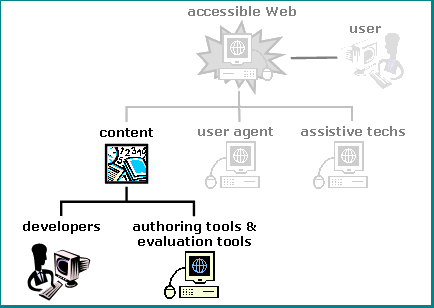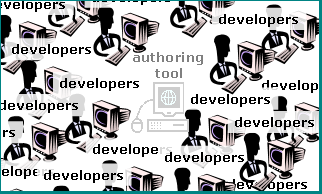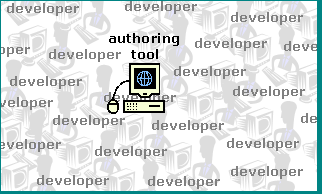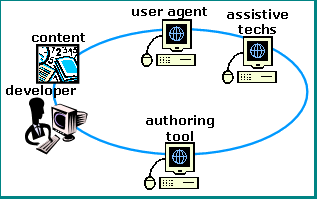Version: Early Concept Draft 2004.08.16
Note: This document is an unapproved draft and should not be
distributed, referenced, or quoted under any circumstances. This
document is under development by the Education and Outreach Working Group
(EOWG), and will be offered to other W3C groups and the public for review. A
change log lists revisions in
progress and links to previous versions.
The purpose of this document is to briefly show how Web accessibility depends on several components working together. It also shows how improvements in specific components could substantially improve Web accessibility.

Whether or not a Web site is accessible to a person using the site ("user") is largely based on:
Users' knowledge, experiences, and in some cases, adaptive strategies using the Web have a role in an accessible user experience. (Users can also be developers.)

The accessibility of the content is largely determined by:

WAI guidelines work together to inform the different components of Web accessibility:
The basic technologies of the Web are fundamental to Web accessibility:
There are significant inter-dependencies between the components; that is, each component relies on other components for effective accessibility.
[alt example not revised yet - as recorded in changelog] For example, for alternative text on images:


When any one component does not work effectively, it results in poorer accessibility. In some cases, the other components can compensate some; however, compensation usually involves much more effort and "work arounds" that are not good for accessibility overall.
Currently the burden of developing accessible content is heavy on developers and thus requires a high level of developer knowledge, skill, and effort from all developers. Better authoring tools could lower the burden on developers, and increase the accessibility of content.

When accessibility features are effectively implemented in one component, the other components are more likely to implement them. However, there is little motivation for one component to implement a feature when it is not implemented in the other components.
With authoring tool and user agent (including assistive technologies) implementation:
If user agents better supported a given accessibility feature, developers would be more inclined to want to implement it and demand that their authoring tool make it easy to implement.
Introduction to Web Accessibility provides additional information about Web Accessibility.
Editor: Shawn Lawton Henry. This Web page is is under development by the EOWG.
Last updated $Date: 2004/08/28 02:57:35 $ by $Author: shawn $